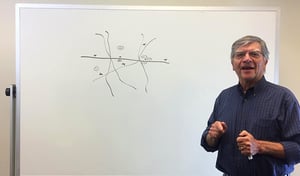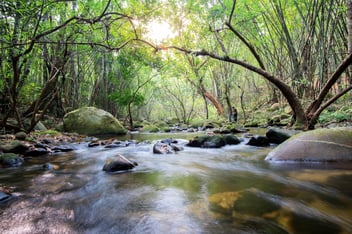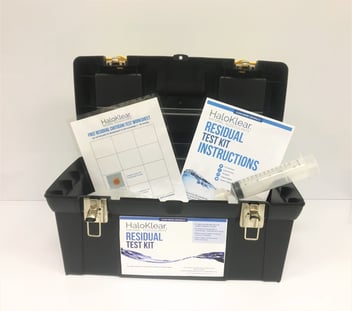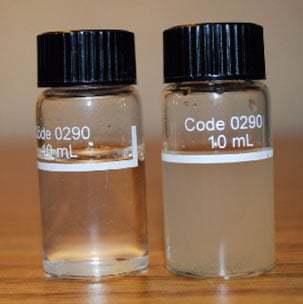INTERN VIEW: Coagulation vs. Flocculation
 Hi there! My name is Lauren Excell, and I'm a junior at the University of Illinois at Urbana-Champaign. I'm studying Civil and Environmental Engineering with a minor in Technology and Management. I'll be spending this summer as an intern at Dober's Innovation and Technology Center in Woodridge.
Hi there! My name is Lauren Excell, and I'm a junior at the University of Illinois at Urbana-Champaign. I'm studying Civil and Environmental Engineering with a minor in Technology and Management. I'll be spending this summer as an intern at Dober's Innovation and Technology Center in Woodridge.
As I begin my internship at Dober, a chemical research and development company, my goal is to learn more about the company's product offerings and operations. I will be writing this blog to share what I learn here this summer, in hopes that sharing my perspective can bring value to others, too.
I will be beginning with the water treatment division and Dober's naturally derived coagulants and flocculants.To learn more about what these products are and what they can do, I interviewed Dr. Joe  Drozd, Research Chemist in the water treatment lab. One of the main things I wanted to learn from Dr. Joe was the difference between coagulation and flocculation. Those terms are thrown around a lot in water treatment, for removing suspended solids or separating oil emulsions, but I have never understood the physical process behind them.
Drozd, Research Chemist in the water treatment lab. One of the main things I wanted to learn from Dr. Joe was the difference between coagulation and flocculation. Those terms are thrown around a lot in water treatment, for removing suspended solids or separating oil emulsions, but I have never understood the physical process behind them.
Q: Can you explain the chemistry behind what happens during the coagulation and flocculation process?
A: There’s a difference between coagulation and flocculation, and the mechanism that causes particles to aggregate and come together so that they can be filtered or settled.
There are three steps:
1. Coagulation is the neutralization of the electronic charge on suspended particles. Particles in water, such as clay, usually have a negative charge. Because like charges repel, the particles remain suspended. If we can neutralize the charged particles by adding a coagulant, then they’re going to be easier to bring together.
2. Flocculation is collecting all these particles by adding a chemical to the water with these suspended solids that causes all these particles to come together. We do that with a flocculant. A flocculant is a long polymer that has positive charges along the polymer chain. Very simply, think of this as a long polymer made of starch, and it has charges along it. Starch is usually neutral, so what we do in manufacturing is we react it with chemicals that give it a positive charge.
3. Now the particles will settle out of solution. You can imagine we have a long polymer with positive charges and we have negatively charged soil particles around. They collect along this polymer chain, and when you get enough particles on the chain you get an agglomerate that’s big enough to filter or settle out. Actually, you have a network of polymers--you have a net with positive charges all along it, and you can almost imagine this net collecting all the negative particles and then coming down in one big particle.
Through this bridging mechanism, you have this net of charged polymers falling out with the material you want to remove. It’s the same whether it’s a solid particle or an oily particle.
MY MAIN TAKEAWAYS:
Taking this time with Dr. Joe helped me understand the difference between coagulants and flocculants. I hope that it helps you too. I can't wait to share everything else that I learn from Dr. Joe and the other great people in this office! Reach out if you have any cool concepts for me to learn about, I'm always looking for ideas.
UP NEXT in my intern adventure.... CHITOSAN.
To read more posts like this, subscribe below.
Some helpful definitions:
- Coagulation: the neutralization of the electronic charge on suspended particles
- Flocculation: collecting suspended particles into an agglomerate
A little bit of background on Dober’s water treatment division:
- Greenfloc products are plant-based, and HaloKlear products are made with chitosan, which is found in shrimp shells, crab shells, and other crustaceans.
- They serve industries ranging from construction to environmental remediation. The water treatment division was formed in 1982, and the HaloKlear line of products was acquired in 2016.




